


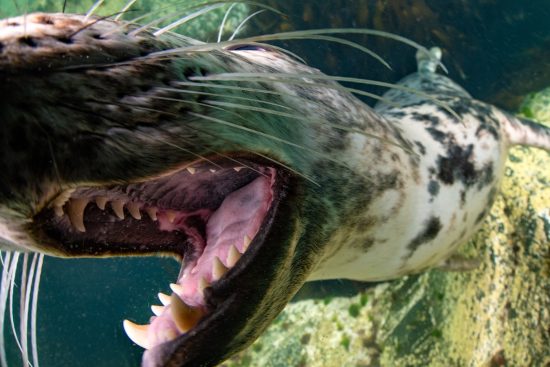
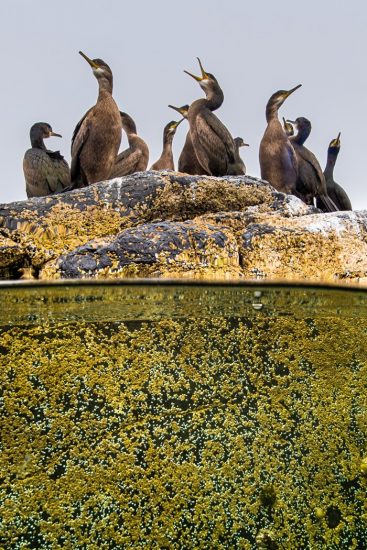
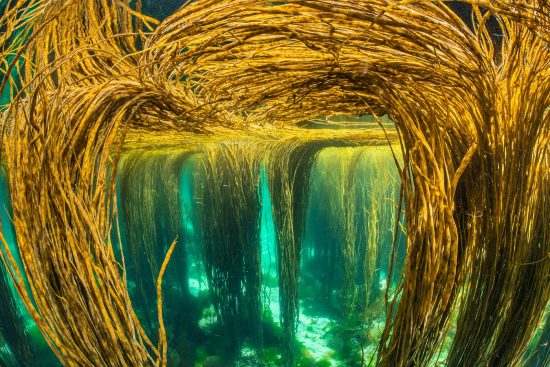
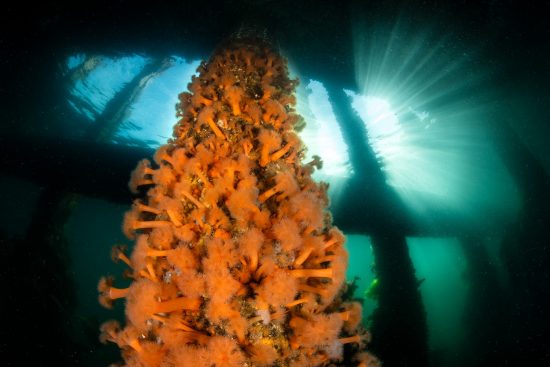



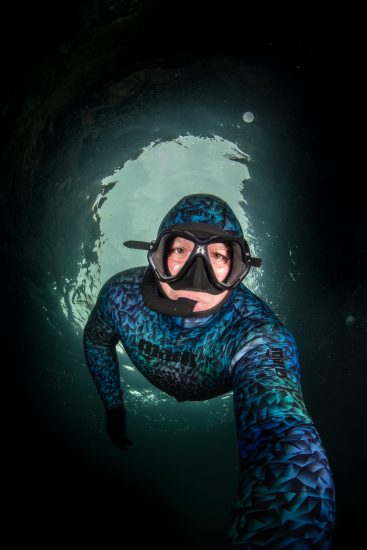
The chilly waters of Scotland do not attract many visiting divers but they should. Scotland’s geologically splintered coastline means that this is a country that is actually 80% water by area - a perfect world waiting for us to explore.
Being northern, Scottish seas have pronounced seasons and in summer they bloom with life. They can also be pleasingly clear, especially so around the offshore islands. My destination is the Hebrides, off the West coast. But there is no getting away from the fact that the water is cold (about the same as the Mediterranean in winter). So I took no chances and used my 6.5mm Polygon freediving suit. Not only could I benefit from the innovative camouflage to sneak within photo range of my subject, but I was also able to happily spend more than 6 hours in the water in a day. In fact, on several occasions I came out of the water so warm that I took the jacket off and stood there wet in the rain and sea breeze just to cool down! Well, you need to if you want to be able to warm back up with a ‘wee dram of single malt whisky’ at the end of the day.
The west coast truly comes alive with wildlife in the summer months. There are huge numbers of seabirds, including the characterful puffin. It is a great area for cetaceans, we saw common dolphins every day and even several minke whales (although jumping in with them is not allowed in the UK). A major target of this trip was the basking shark, and this is one of best places in the world to see them. But I know from experience that this is one of the hardest sharks to get in front of. They are rare and being plankton feeders aren't even attracted to bait. They live hidden in dark waters and we can only spot them when the conditions are perfect and their come right to the surface to feed. Despite great efforts from our hosts Basking Shark Scotland they proved as elusive as the Loch Ness monster this time.
But that didn’t mean that my camera’s memory cards went home empty – far from it – I was able to focus on other great subjects. We had amazing interactions with grey seals (Scotland is home to over 30% of the world’s population). But my favourite subject was seaweed. In summer, the gardens of seaweeds and forests of kelp are flourishing strongly and for the camera they present a riot of shapes, colours and textures. They are so underappreciated and so beautiful. Summer also brings large numbers of jellyfish, most impressive is the mighty lion’s mane jellyfish. We also had the chance to visit seabird colonies and swim inside the magnificent Fingal’s Cave, carved by the sea between giant hexagonal columns of basalt.
Finally, just a quick note on equipment. As a non-athletic freediver I prefer softer fins than the champions use. I used a pair of Razor fins, which is what I’d recommend to photographers who periodically freedive for images, like me. They are well suited to spending many hours in the water and swimming for long periods at the surface as well as having plenty of power when diving down. My cold water pair are one size larger than I normally take, so that I can wear that with thicker neoprene socks for extra warmth, although with that Polygon suit, it probably wasn’t necessary! I’ll need to find somewhere colder than Scotland...
 Alex
Alex 30th August 2021
30th August 2021